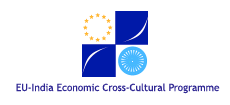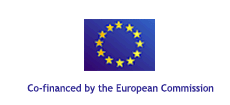FINAL REMARKS
The proposed measures can be summarised as follows:
- Hydrogeological approach: Generally, emphasis has to be placed on the importance of the alluvial aquifer for the following functions which affect groundwater quality and quantity:
a) storage function;
b) linking function;
c) distributional function;
d) "buffer" function.
These functions must not be further diminished by human activity. It is of the utmost importance that they should be enhanced. This can be realised by measures considering the following qualitative and quantitative aspects:
1) The widespread and uncontrolled mining of alluvial sand should be regulated.
2) To enhance the functional properties of the alluvial layer, the construction of cross-flow barriers along the Nakkavagu river would achieve a reduction of flow velocity and subsequently a retention of monsoon water. - Pollution reduction approach: At present there are only snapshots available. These indicate rather high contamination of groundwater and surface water with heavy metals and organic/inorganic pollutants. As a result, groundwater quality exceeds drinking water limits in large parts of the area, and in some cases also the limits prescribed for irrigation water.
Based on already available water management data, a preliminary evaluation would enable a rough classification and definition of hotspots and priority measures. Further elements of this approach which can be implemented only gradually would be:
a) Priority lists of contaminants for further action;
b) classification of contamination sources according to their impact and toxicity;
c) surveillance of uncontrolled wastewater discharges;
d) determination of remediation goals;
e) optimisation and upgrading of the existing common effluent treatment plants;
f) implementation of process-integrated wastewater treatment for extremely environmentally relevant industries;
g) additional facilities for efficient treatment and disposal systems;
h) land use planning concept (protection and remediation zones);
i) early warning and regular monitoring network, data collection;
j) legislative, technological and organisational measures. - Enhancing public awareness: The available data on the current status of water quality will be used for public information to domestic, agricultural, municipal and industrial water users in order to enhance public awareness and involvement in water management.
The chain of significant consequences of water contamination should be seriously explained and illustrated to the public. This would include the demonstration of pathways (soil, water, air) for easily and less easily biodegradable substances as well as the resulting exposure for humans and wildlife. The public should become aware of the time period which would be necessary to restore the original water quality.
As precipitation rates cannot be artificially increased, groundwater supply can only be improved by the limited application of technological measures, the maintenance of aquifer size and the reduction of water consumption, as well as the imposition of high quality standards.
This will provide a transparent background for decision-making by local authorities as well as policy makers. The clear presentation of public benefits of water management measures will increase citizens' tolerance and understanding of possible restrictions, such as the designation of protection zones etc.

